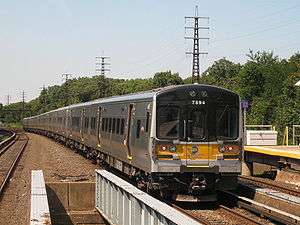Long Beach Branch
| Long Beach Branch | ||||||||||||||||||||||||||||||||||||||||||||||||||||||||||||||||||||||||||||||||||||||||||||||||||||||||||||||||||||||||||||||||||||||||||||||||||||||||||||||||||||||||||||||||||||||||||||||||||||||||||||||||||||||||||||||||||||||||||||||||||||||||||||||||||||||||||||||||||||||||||||||||||||||||||||||||||||||||||
|---|---|---|---|---|---|---|---|---|---|---|---|---|---|---|---|---|---|---|---|---|---|---|---|---|---|---|---|---|---|---|---|---|---|---|---|---|---|---|---|---|---|---|---|---|---|---|---|---|---|---|---|---|---|---|---|---|---|---|---|---|---|---|---|---|---|---|---|---|---|---|---|---|---|---|---|---|---|---|---|---|---|---|---|---|---|---|---|---|---|---|---|---|---|---|---|---|---|---|---|---|---|---|---|---|---|---|---|---|---|---|---|---|---|---|---|---|---|---|---|---|---|---|---|---|---|---|---|---|---|---|---|---|---|---|---|---|---|---|---|---|---|---|---|---|---|---|---|---|---|---|---|---|---|---|---|---|---|---|---|---|---|---|---|---|---|---|---|---|---|---|---|---|---|---|---|---|---|---|---|---|---|---|---|---|---|---|---|---|---|---|---|---|---|---|---|---|---|---|---|---|---|---|---|---|---|---|---|---|---|---|---|---|---|---|---|---|---|---|---|---|---|---|---|---|---|---|---|---|---|---|---|---|---|---|---|---|---|---|---|---|---|---|---|---|---|---|---|---|---|---|---|---|---|---|---|---|---|---|---|---|---|---|---|---|---|---|---|---|---|---|---|---|---|---|---|---|---|---|---|---|---|---|---|---|---|---|---|---|---|---|---|---|---|---|---|---|---|---|---|---|---|---|---|---|---|---|---|---|---|---|---|---|---|---|
 Long Beach Branch train #853 departs Lynbrook, en route to New York Penn Station. | ||||||||||||||||||||||||||||||||||||||||||||||||||||||||||||||||||||||||||||||||||||||||||||||||||||||||||||||||||||||||||||||||||||||||||||||||||||||||||||||||||||||||||||||||||||||||||||||||||||||||||||||||||||||||||||||||||||||||||||||||||||||||||||||||||||||||||||||||||||||||||||||||||||||||||||||||||||||||||
| Overview | ||||||||||||||||||||||||||||||||||||||||||||||||||||||||||||||||||||||||||||||||||||||||||||||||||||||||||||||||||||||||||||||||||||||||||||||||||||||||||||||||||||||||||||||||||||||||||||||||||||||||||||||||||||||||||||||||||||||||||||||||||||||||||||||||||||||||||||||||||||||||||||||||||||||||||||||||||||||||||
| Type | Commuter rail | |||||||||||||||||||||||||||||||||||||||||||||||||||||||||||||||||||||||||||||||||||||||||||||||||||||||||||||||||||||||||||||||||||||||||||||||||||||||||||||||||||||||||||||||||||||||||||||||||||||||||||||||||||||||||||||||||||||||||||||||||||||||||||||||||||||||||||||||||||||||||||||||||||||||||||||||||||||||||
| System | Long Island Rail Road | |||||||||||||||||||||||||||||||||||||||||||||||||||||||||||||||||||||||||||||||||||||||||||||||||||||||||||||||||||||||||||||||||||||||||||||||||||||||||||||||||||||||||||||||||||||||||||||||||||||||||||||||||||||||||||||||||||||||||||||||||||||||||||||||||||||||||||||||||||||||||||||||||||||||||||||||||||||||||
| Status | Operational | |||||||||||||||||||||||||||||||||||||||||||||||||||||||||||||||||||||||||||||||||||||||||||||||||||||||||||||||||||||||||||||||||||||||||||||||||||||||||||||||||||||||||||||||||||||||||||||||||||||||||||||||||||||||||||||||||||||||||||||||||||||||||||||||||||||||||||||||||||||||||||||||||||||||||||||||||||||||||
| Locale | Nassau County, New York, USA | |||||||||||||||||||||||||||||||||||||||||||||||||||||||||||||||||||||||||||||||||||||||||||||||||||||||||||||||||||||||||||||||||||||||||||||||||||||||||||||||||||||||||||||||||||||||||||||||||||||||||||||||||||||||||||||||||||||||||||||||||||||||||||||||||||||||||||||||||||||||||||||||||||||||||||||||||||||||||
| Termini |
Valley Stream Long Beach | |||||||||||||||||||||||||||||||||||||||||||||||||||||||||||||||||||||||||||||||||||||||||||||||||||||||||||||||||||||||||||||||||||||||||||||||||||||||||||||||||||||||||||||||||||||||||||||||||||||||||||||||||||||||||||||||||||||||||||||||||||||||||||||||||||||||||||||||||||||||||||||||||||||||||||||||||||||||||
| Stations | 5 | |||||||||||||||||||||||||||||||||||||||||||||||||||||||||||||||||||||||||||||||||||||||||||||||||||||||||||||||||||||||||||||||||||||||||||||||||||||||||||||||||||||||||||||||||||||||||||||||||||||||||||||||||||||||||||||||||||||||||||||||||||||||||||||||||||||||||||||||||||||||||||||||||||||||||||||||||||||||||
| Services | ||||||||||||||||||||||||||||||||||||||||||||||||||||||||||||||||||||||||||||||||||||||||||||||||||||||||||||||||||||||||||||||||||||||||||||||||||||||||||||||||||||||||||||||||||||||||||||||||||||||||||||||||||||||||||||||||||||||||||||||||||||||||||||||||||||||||||||||||||||||||||||||||||||||||||||||||||||||||||
| Operation | ||||||||||||||||||||||||||||||||||||||||||||||||||||||||||||||||||||||||||||||||||||||||||||||||||||||||||||||||||||||||||||||||||||||||||||||||||||||||||||||||||||||||||||||||||||||||||||||||||||||||||||||||||||||||||||||||||||||||||||||||||||||||||||||||||||||||||||||||||||||||||||||||||||||||||||||||||||||||||
| Opened | 1880 (as New York and Long Beach Railroad) | |||||||||||||||||||||||||||||||||||||||||||||||||||||||||||||||||||||||||||||||||||||||||||||||||||||||||||||||||||||||||||||||||||||||||||||||||||||||||||||||||||||||||||||||||||||||||||||||||||||||||||||||||||||||||||||||||||||||||||||||||||||||||||||||||||||||||||||||||||||||||||||||||||||||||||||||||||||||||
| Owner | Long Island Rail Road | |||||||||||||||||||||||||||||||||||||||||||||||||||||||||||||||||||||||||||||||||||||||||||||||||||||||||||||||||||||||||||||||||||||||||||||||||||||||||||||||||||||||||||||||||||||||||||||||||||||||||||||||||||||||||||||||||||||||||||||||||||||||||||||||||||||||||||||||||||||||||||||||||||||||||||||||||||||||||
| Operator(s) | Metropolitan Transportation Authority | |||||||||||||||||||||||||||||||||||||||||||||||||||||||||||||||||||||||||||||||||||||||||||||||||||||||||||||||||||||||||||||||||||||||||||||||||||||||||||||||||||||||||||||||||||||||||||||||||||||||||||||||||||||||||||||||||||||||||||||||||||||||||||||||||||||||||||||||||||||||||||||||||||||||||||||||||||||||||
| Technical | ||||||||||||||||||||||||||||||||||||||||||||||||||||||||||||||||||||||||||||||||||||||||||||||||||||||||||||||||||||||||||||||||||||||||||||||||||||||||||||||||||||||||||||||||||||||||||||||||||||||||||||||||||||||||||||||||||||||||||||||||||||||||||||||||||||||||||||||||||||||||||||||||||||||||||||||||||||||||||
| Track gauge | 4 ft 8 1⁄2 in (1,435 mm) | |||||||||||||||||||||||||||||||||||||||||||||||||||||||||||||||||||||||||||||||||||||||||||||||||||||||||||||||||||||||||||||||||||||||||||||||||||||||||||||||||||||||||||||||||||||||||||||||||||||||||||||||||||||||||||||||||||||||||||||||||||||||||||||||||||||||||||||||||||||||||||||||||||||||||||||||||||||||||
| Electrification | 750 V (DC) Third rail | |||||||||||||||||||||||||||||||||||||||||||||||||||||||||||||||||||||||||||||||||||||||||||||||||||||||||||||||||||||||||||||||||||||||||||||||||||||||||||||||||||||||||||||||||||||||||||||||||||||||||||||||||||||||||||||||||||||||||||||||||||||||||||||||||||||||||||||||||||||||||||||||||||||||||||||||||||||||||
| ||||||||||||||||||||||||||||||||||||||||||||||||||||||||||||||||||||||||||||||||||||||||||||||||||||||||||||||||||||||||||||||||||||||||||||||||||||||||||||||||||||||||||||||||||||||||||||||||||||||||||||||||||||||||||||||||||||||||||||||||||||||||||||||||||||||||||||||||||||||||||||||||||||||||||||||||||||||||||
The Long Beach Branch is an electrified rail line and service owned and operated by the Long Island Rail Road in the U.S. state of New York. The branch begins at Valley Interlocking, at Valley Stream station, where the Atlantic Branch tracks from the west are redesignated Long Beach Branch and the Far Rockaway Branch curves south. East from there the Long Beach Branch parallels the Montauk Branch to Lynbrook, where it turns south toward Long Beach.[1][2]
History

The Long Beach Branch began as the New York and Long Beach Railroad Company (NY&LB) Company from Lynbrook to Long Beach in 1880. The original southern terminus was along the Atlantic Ocean. The LIRR leased the NY&LB in 1880 and operated it until 1904 when it merged with the LIRR. Five years later, Long Beach station was moved from the ocean front to Reynolds Channel, where it remains today.
A five-mile (8 km) extension to Point Lookout, New York owned by the Long Beach Marine Railway Company existed between 1881 and 1895. When the LIRR bought the line in 1886, they continued to operate passenger trains along the line until 1890.[3]
The branch was extended westward from Lynbrook to Valley Stream in 1910 as part of its integration into the Atlantic Branch. The line was double-tracked from Valley Stream to Lynbrook in late 1910, then from East Rockaway to Wreck Lead ("WL") on January 15, 1927. Electrification of the main tracks from Valley Stream to Long Beach was finished in September 1910. Electrification came to freight sidings between 1928 and 1930. Color light signals were installed in January 1927; they were later replaced by PRR-style position light signals.
Hurricane Sandy service disruptions
Hurricane Sandy struck Long Island on October 29–30, 2012, and the Long Beach Branch was the most seriously affected of all the LIRR lines. Third rail power was lost, as three of the four substations on the line were knocked out. The line between Island Park and Long Beach was strewn with debris, and switch motors at Long Beach station, along with other signal and communications components on the line, were rendered inoperative due to immersion in salt water. Partial service was restored on November 14, when a diesel-operated shuttle between Lynbrook and Long Beach began operating on a modified weekday schedule, with shuttle buses being utilized on weekends and Thanksgiving in place of train service. Full electric service, initially not expected to return until January 2013,[4] was restored much earlier than anticipated, on November 25, 2012.[5]
Service
On weekdays, many Long Beach Branch trains serve Penn Station, with limited service to/from Atlantic Terminal, and run express between Valley Stream and Jamaica. On weekends and on some trains during weekday peak periods, trains also stop at Locust Manor, Laurelton and Rosedale on the Atlantic Branch. On weekends all trains serve Penn except for some post-midnight trains to/from Atlantic Terminal and one to Jamaica.[2]
Stations
| Zone | Station | Miles (km) from NYP[6] |
Date opened |
Date closed |
Connections / notes |
|---|---|---|---|---|---|
| 3 | For continuing service to Jamaica and points west, see Atlantic Branch | ||||
| 4 | Lynbrook |
19.5 (31.4) | 1867[7] | Originally Pearsall's Corners, then Pearsall's | |
| 7 | Centre Avenue |
20.4 (32.8) | 1898 | Originally South Lynbrook | |
| East Rockaway |
20.9 (33.6) | 1880 | |||
| Atlantic Avenue | 1898 | 1951 | |||
| Oceanside |
21.4 (34.4) | 1897 | |||
| Barnum Island Channel Bridge | |||||
| Jekyl Island | 1901 | 1922 | Originally named Barnum Island, then Island Park | ||
| Island Park |
23.6 (38.0) | 1898 | Originally The Dykes | ||
| Reynolds Channel Bridge | |||||
| Wreck Lead | 1888 | 1927 | |||
| Queenswater | 1898 | 1936 | Originally Inner Beach, then Queenswater | ||
| Club House | 1898 | 1909 | |||
| Long Beach |
24.9 (40.0) | 1880 | |||
References
|
| |
|
|
- ↑ "MTA LIRR - LIRR Map". mta.info.
- 1 2 LIRR Long Beach Branch Timetable
- ↑ "LIRR Branch Notes". trainsarefun.com.
- ↑ "LIRR Restores Limited Weekday Train Service on Long Beach Branch". mta.info. Metropolitan Transportation Authority. Retrieved November 15, 2012.
- ↑ "LIRR Restores Weekend & Weekday Electric Train Service on Long Beach Branch starting Nov. 25". mta.info. Metropolitan Transportation Authority. Retrieved November 25, 2012.
- ↑ Station pages linked from LIRR Stations Archived September 7, 2014, at the Wayback Machine.
- ↑ Vincent F. Seyfried, The Long Island Rail Road: A Comprehensive History, Part One: South Side R.R. of L.I., © 1961
External links
Route map:
![]()

